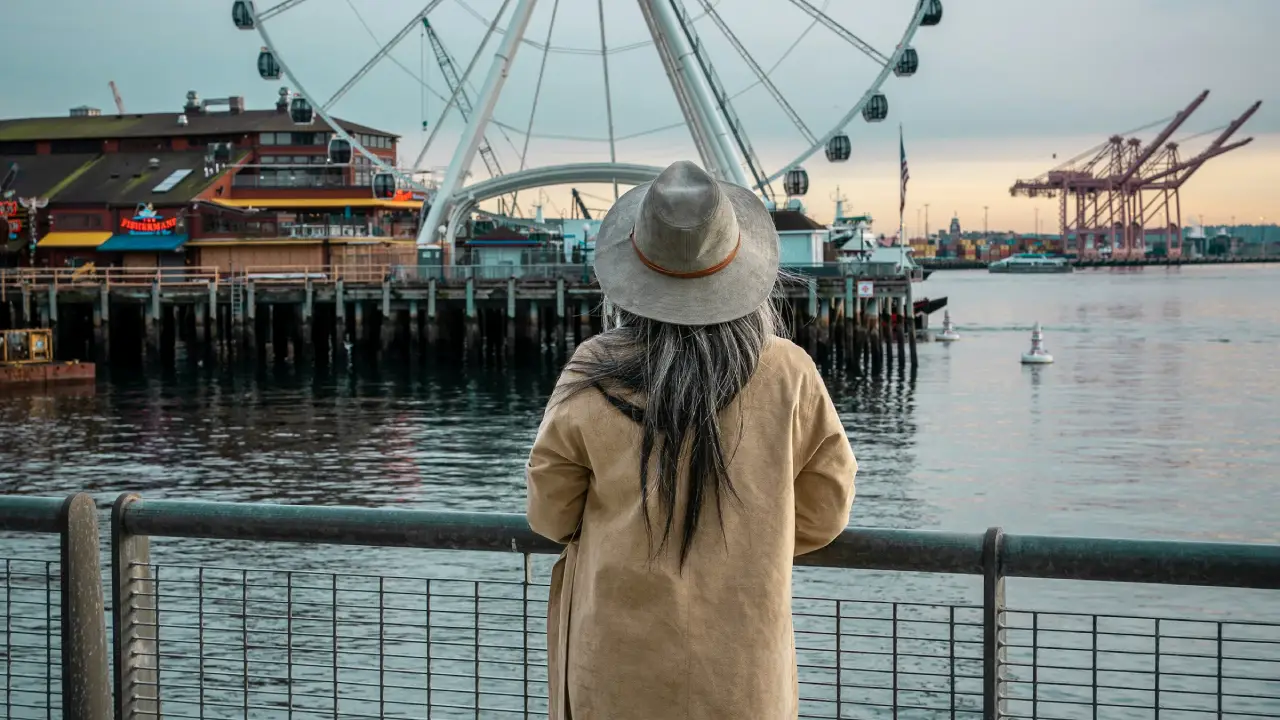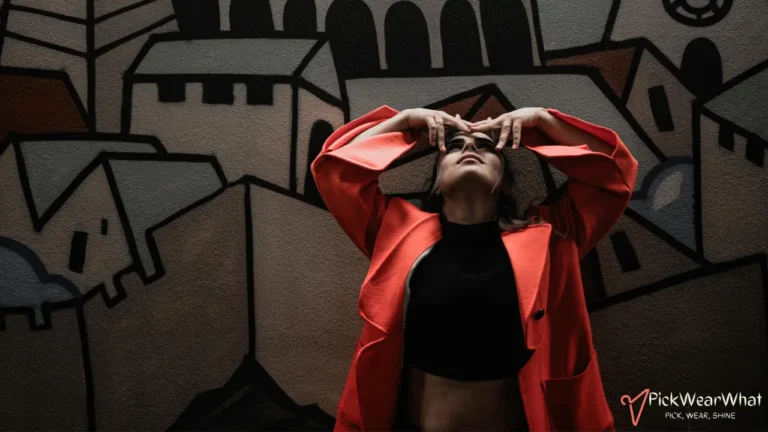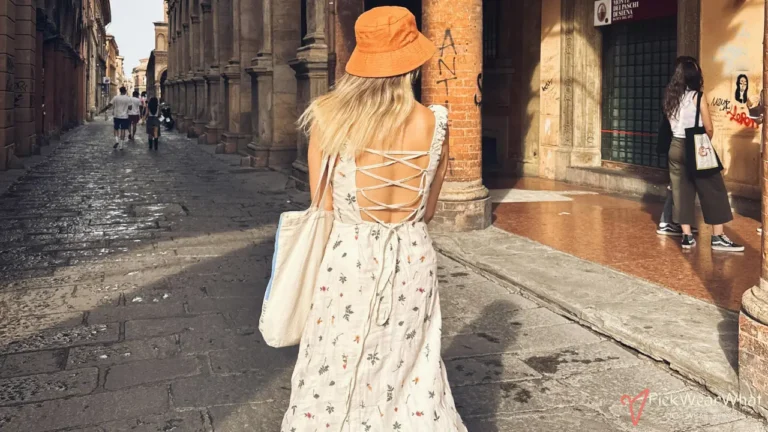Versatile layers, comfortable footwear, and weather-resistant attire are the best options to wear in Seattle. Known for its diverse culture, iconic landmarks, and frequent rain showers, Seattle offers a unique blend of urban and outdoor activities. Whether you’re exploring Pike Place Market, visiting the Space Needle, or enjoying the city’s vibrant coffee scene, dressing appropriately can enhance your experience and ensure you stay comfortable.
During my last visit to Seattle, I found that breathable fabrics, waterproof outerwear, and practical accessories made a significant difference in my comfort
What to Wear in Seattle: A Month-Wise Guide from January to December
Seattle is known for its diverse culture, iconic landmarks, and frequent rain showers. Whether you’re exploring Pike Place Market, visiting the Space Needle, or enjoying the city’s vibrant coffee scene, dressing appropriately is key to staying comfortable. Here’s a comprehensive month-by-month guide on what to wear in Seattle.
January
January in Seattle is cold and rainy, with temperatures typically ranging from the mid-30s to mid-40s (Fahrenheit). Layering is key to adapting to the cold and wet conditions while staying warm and dry.
- Waterproof jackets or raincoats
- Sweaters or thermal tops
- Jeans or warm trousers
- Waterproof boots
February
February is cold and wet, slightly milder than January in Seattle. Opt for waterproof and insulating layers to stay comfortable during fluctuating temperatures and rain.
- Waterproof coats or parkas
- Long-sleeve shirts or sweaters
- Jeans or casual pants
- Waterproof shoes or boots
March
March marks the beginning of spring, with slightly warmer but still rainy weather in Seattle. Choose breathable fabrics and light waterproof layers to stay comfortable as the weather warms up.
- Light waterproof jackets or trench coats
- Long-sleeve shirts or blouses
- Jeans or light pants
- Waterproof walking shoes
April
April brings mild temperatures and frequent showers in Seattle. Carry an umbrella and wear waterproof outerwear to stay dry during spring showers.
- Light rain jackets or waterproof coats
- Light sweaters or cardigans
- Jeans or skirts
- Waterproof shoes or boots
May
May is warmer and often still rainy, perfect for outdoor activities in Seattle. Choose breathable fabrics and comfortable footwear to stay cool and dry.
- Light waterproof jackets or cardigans
- T-shirts or blouses
- Jeans or light pants
- Comfortable waterproof shoes
June
June ushers in the summer with warmer temperatures and occasional rain in Seattle. Opt for light, breathable fabrics and carry a light rain jacket for unexpected showers.
- Lightweight jackets or raincoats
- Tank tops or short-sleeve shirts
- Shorts or skirts
- Comfortable walking shoes
July
July is warm and ideal for outdoor activities, with less frequent rain in Seattle. Wear light, breathable fabrics and stay hydrated during warmer days.
- Lightweight dresses or rompers
- T-shirts or tank tops
- Shorts or skirts
- Sandals or comfortable shoes
August
August remains warm with occasional rain showers in Seattle. Choose light, airy clothing and carry a small umbrella or rain jacket for occasional rain showers.
- Lightweight, moisture-wicking clothing
- T-shirts or tank tops
- Shorts or skirts
- Comfortable sandals or walking shoes
September
September sees a gradual transition to fall with cooler temperatures in Seattle. Layering helps you adapt to the warm days and cooler evenings.
- Light sweaters or cardigans for cooler evenings
- T-shirts or blouses
- Lightweight pants or shorts
- Comfortable shoes
October
October has mild and often rainy weather, ideal for outdoor activities in Seattle. Choose light layers that you can easily add or remove as needed.
- Waterproof jackets or sweaters
- Long-sleeve shirts or blouses
- Jeans or casual pants
- Waterproof shoes or boots
November
November is cooler and rainier, with temperatures dropping as winter approaches in Seattle. Layering with medium-weight outerwear helps you stay warm as the weather cools.
- Medium-weight jackets or coats
- Sweaters or long-sleeve shirts
- Warm pants or jeans
- Waterproof footwear
December
December is cold and rainy, with a festive atmosphere in Seattle. Add festive touches to your outfits with seasonal colors and patterns to enjoy the holiday spirit.
- Warm jackets or coats
- Layered tops (sweaters, long-sleeve shirts)
- Warm pants or jeans
- Comfortable waterproof walking shoes
Simple Table Guide for What to Wear in Seattle by Month
| Month | Essential Clothing | Features |
|---|---|---|
| January | Waterproof jackets, sweaters, jeans, waterproof boots | Layering, warmth, waterproof |
| February | Waterproof coats, long-sleeve shirts, jeans, waterproof shoes | Insulating, waterproof, warm |
| March | Light waterproof jackets, long-sleeve shirts, jeans, walking shoes | Breathable, waterproof, light layers |
| April | Light rain jackets, sweaters, jeans, waterproof shoes | Lightweight, waterproof, versatile |
| May | Light waterproof jackets, t-shirts, jeans, waterproof shoes | Breathable, comfortable, waterproof |
| June | Lightweight jackets, tank tops, shorts, walking shoes | Light, breathable, rain-ready |
| July | Lightweight dresses, t-shirts, shorts, sandals | Light, breathable, comfortable |
| August | Moisture-wicking clothing, t-shirts, shorts, sandals | Light, airy, rain-prepared |
| September | Light sweaters, t-shirts, pants, comfortable shoes | Layering, fall transition |
| October | Waterproof jackets, long-sleeve shirts, jeans, waterproof shoes | Light layers, waterproof, casual |
| November | Medium-weight jackets, sweaters, jeans, waterproof shoes | Warmth, layering, waterproof |
| December | Warm jackets, layered tops, warm pants, waterproof shoes | Festive, comfortable, waterproof |
Tips for Staying Comfortable and Stylish
- Layering: Seattle’s weather can change throughout the day, so dressing in layers allows you to adapt to varying temperatures and rain.
- Waterproof Fabrics: Opt for waterproof fabrics to stay dry during frequent rain showers.
- Comfortable Footwear: Choose waterproof shoes that are comfortable for walking, as you’ll likely be exploring the city’s many attractions.
- Sun Protection: Even with frequent rain, use accessories like hats and sunglasses for the occasional sunny days.
What to Wear in Seattle in Summer?
You should wear lightweight, breathable fabrics and comfortable footwear in Seattle in the summer. Although Seattle experiences warm and sunny days, occasional rain showers can occur, so it’s important to be prepared for varying weather conditions. Opt for casual yet stylish outfits that allow you to stay cool and comfortable while exploring the city’s numerous attractions.
| Category | Essential Items | Features |
|---|---|---|
| Tops | T-shirts, tank tops, blouses, lightweight sweaters | Breathable, moisture-wicking, light colors |
| Bottoms | Shorts, capri pants, skirts, jeans | Lightweight, breathable, comfortable |
| Footwear | Sandals, flip-flops, lightweight sneakers, espadrilles | Breathable, comfortable, versatile |
| Accessories | Sun hats, sunglasses, light scarves, small umbrellas | Sun protection, stylish, practical |
Tops
- T-Shirts: Lightweight, moisture-wicking t-shirts are perfect for casual outings.
- Tank Tops: Ideal for staying cool, tank tops allow maximum airflow.
- Blouses: Choose lightweight, loose-fitting blouses that provide both style and comfort.
- Lightweight Sweaters or Cardigans: For cooler evenings, bring along a light sweater or cardigan.
Features to Look For
- Breathable, moisture-wicking fabrics
- Light colors to reflect sunlight
- Loose, comfortable fits
Bottoms: Comfortable and Cool
- Shorts: Lightweight shorts in breathable materials like cotton or linen are a summer staple.
- Capri Pants: For a bit more coverage, capri pants are a stylish and comfortable option.
- Skirts: Flowing skirts made from light fabrics are great for staying cool.
- Jeans: On cooler days, opt for well-fitted jeans in lighter washes.
Features to Look For
- Lightweight, breathable fabrics
- Comfortable, stretchy materials
- Versatile styles for different occasions
Footwear: Practical and Breathable
- Sandals: Comfortable sandals are perfect for walking around and keeping your feet cool.
- Flip-Flops: Ideal for casual outings and trips to the beach.
- Lightweight Sneakers: Breathable sneakers are great for more active days.
- Espadrilles: Stylish and comfortable, espadrilles can be dressed up or down.
Features to Look For
- Breathable materials
- Comfortable insoles
- Versatility for different activities
Accessories: Sun Protection and Style
- Sun Hats: A wide-brimmed hat provides essential sun protection and adds a stylish touch.
- Sunglasses: Protect your eyes with a pair of stylish sunglasses. Look for UV protection and polarized lenses.
- Light Scarves: A lightweight scarf can provide sun protection and add a pop of color to your outfit.
- Small Umbrella: A compact, portable umbrella is useful for unexpected rain showers.
Additional Tips
- Choose accessories that provide practical benefits, such as sun protection.
- Reflect your personal style while embracing the relaxed summer vibe.
- Opt for pieces that are easy to mix and match with your outfits.
Tips for Staying Comfortable and Stylish
- Stay Hydrated: Carry a water bottle with you to stay hydrated in the heat.
- Choose Light Colors: Light colors reflect sunlight and help keep you cool.
- Opt for Loose Fits: Loose-fitting clothes allow air to circulate and keep you comfortable.
- Sun Protection: Use sunscreen, wear a hat, and bring sunglasses to protect yourself from the intense sun.
What to Wear in Seattle in Winter?
You should wear warm, layered clothing and waterproof outerwear in Seattle in the winter. Winters in Seattle are characterized by cold temperatures and frequent rain, so it’s essential to stay warm and dry. Opt for insulating layers, comfortable footwear, and practical accessories to navigate the city’s winter weather.
| Category | Essential Items | Features |
|---|---|---|
| Tops | Thermal tops, sweaters, long-sleeve shirts, cardigans | Warm, insulating, layered |
| Bottoms | Thermal leggings, jeans, wool pants | Warm, durable, versatile |
| Footwear | Waterproof boots, ankle boots, thermal socks | Protective, comfortable, insulated |
| Outerwear | Heavy coats, down jackets, parkas | Warm, weather-resistant, functional |
| Accessories | Scarves, gloves, hats, earmuffs | Warmth, style, practical |
Tops: Warm and Layered
- Thermal Tops: Base layers like thermal shirts help retain body heat.
- Sweaters: Opt for wool or cashmere sweaters for extra warmth.
- Long-Sleeve Shirts: Comfortable and easy to layer under sweaters or jackets.
- Cardigans: A thick cardigan adds an extra layer of insulation.
Features to Look For
- Warm, insulating fabrics
- Comfortable fits
- Layering potential
Bottoms: Warm and Durable
- Thermal Leggings: Wear thermal leggings under jeans or trousers for added warmth.
- Jeans: Opt for thicker, heavier denim to keep warm.
- Wool Pants: For a dressier look, wool pants provide both warmth and style.
Features to Look For
- Warm, insulating fabrics
- Comfortable, stretchy materials
- Durable and versatile styles
Footwear: Protective and Comfortable
- Waterproof Boots: Insulated, waterproof boots are essential for navigating rain and slush.
- Ankle Boots: For less rainy days, stylish ankle boots with good traction are a great option.
- Thermal Socks: Keep your feet warm with thick, thermal socks.
Features to Look For
- Waterproof and insulated materials
- Comfortable insoles for extended wear
- Good traction for slippery conditions
Outerwear: Warm and Weather-Resistant
- Heavy Coats or Down Jackets: A well-insulated coat or down jacket is crucial for staying warm.
- Parkas: Choose a parka with a hood for extra protection against the wind and rain.
- Scarves, Gloves, and Hats: Essential accessories for keeping warm and protecting against the cold.
Features to Look For
- Insulating, weather-resistant materials
- Comfortable fits that allow for layering
- Functional hoods and pockets
Accessories: Essential for Warmth
- Scarves: Thick, wool scarves provide added warmth and protection against the wind.
- Gloves: Insulated gloves keep your hands warm and protected.
- Hats: Beanies or wool hats are essential for retaining body heat.
- Earmuffs: For extra ear protection on particularly cold days.
Additional Tips
- Choose accessories that provide both warmth and style.
- Reflect your personal style while ensuring practicality.
- Opt for pieces that are easy to mix and match with your outfits.
Additional Tips
- Layering: Layer your clothing to adapt to the changing temperatures and stay warm.
- Waterproof Materials: Choose waterproof outerwear and footwear to keep dry during frequent rain showers.
- Comfortable Footwear: Ensure your shoes are comfortable and have good traction for walking in wet conditions.
- Warm Accessories: Use scarves, gloves, hats, and earmuffs to add warmth and style to your winter outfit.
What to Wear in Seattle During Spring?
You should wear light layers, comfortable footwear, and waterproof outerwear in Seattle during spring. Spring in Seattle brings mild temperatures and frequent rain showers, so dressing in versatile, weather-appropriate clothing is essential. Opt for breathable fabrics and practical accessories to stay comfortable and dry while exploring the city.
| Category | Essential Items | Features |
|---|---|---|
| Tops | T-shirts, long-sleeve shirts, blouses, light sweaters | Breathable, lightweight, easy to layer |
| Bottoms | Jeans, capri pants, skirts, light pants | Lightweight, breathable, comfortable |
| Footwear | Waterproof shoes, sneakers, flats | Waterproof, comfortable, versatile |
| Outerwear | Light rain jackets, trench coats, denim jackets | Waterproof, light, practical |
| Accessories | Umbrella, scarves, hats, sunglasses | Sun protection, stylish, practical |
Tops: Light and Layered
- T-Shirts: Lightweight and breathable t-shirts are perfect for casual outings.
- Long-Sleeve Shirts: Comfortable and easy to layer under jackets or sweaters.
- Blouses: Choose lightweight, loose-fitting blouses for style and comfort.
- Light Sweaters or Cardigans: Bring along a light sweater or cardigan for cooler mornings and evenings.
Features to Look For
- Breathable, lightweight fabrics
- Comfortable fits
- Easy to layer
Bottoms: Comfortable and Versatile
- Jeans: A pair of well-fitted jeans is a staple for spring. Opt for lighter washes for a more relaxed look.
- Capri Pants: For a bit more coverage, capri pants are a stylish and comfortable option.
- Skirts: Flowing skirts made from light fabrics are great for staying cool.
- Light Pants: On cooler days, choose comfortable, breathable pants.
Features to Look For
- Lightweight, breathable fabrics
- Comfortable, stretchy materials
- Versatile styles for different occasions
Footwear: Practical and Stylish
- Waterproof Shoes: Essential for navigating rain showers, choose comfortable and stylish waterproof shoes.
- Sneakers: Breathable sneakers are great for more active days.
- Flats: Stylish flats can be dressed up or down and are comfortable for extended wear.
Features to Look For
- Waterproof or water-resistant materials
- Comfortable insoles
- Versatility for different activities
Outerwear: Light and Waterproof
- Light Rain Jackets: A light rain jacket is essential for staying dry during spring showers.
- Trench Coats: Stylish and practical, trench coats provide good protection against rain.
- Denim or Light Jackets: Perfect for layering and providing warmth without being too heavy.
Features to Look For
- Waterproof or water-resistant materials
- Comfortable fits that allow for layering
- Stylish and practical designs
Accessories: Functional and Stylish
- Umbrella: A compact, portable umbrella is essential for unexpected rain showers.
- Scarves: A lightweight scarf can add a touch of style and provide a bit of warmth.
- Hats: A stylish hat can provide sun protection and add a chic touch to your outfit.
- Sunglasses: Protect your eyes with a pair of stylish sunglasses. Look for UV protection and polarized lenses.
Additional Tips
- Choose accessories that provide practical benefits, such as sun and rain protection.
- Reflect your personal style while embracing the vibrant spring vibe.
- Opt for pieces that are easy to mix and match with your outfits.
Additional Tips for Spring Season
- Layering: Seattle’s spring weather can vary, so layering allows you to adjust your outfit as needed.
- Choose Light Colors: Light colors reflect sunlight and help keep you cool.
- Opt for Breathable Fabrics: Breathable fabrics like cotton and linen help you stay comfortable in varying temperatures.
- Sun and Rain Protection: Use accessories like umbrellas, hats, and sunglasses to protect yourself from the elements.
FAQs On What To Wear in Seattle
In Seattle’s summer, you should wear light and breathable clothing like cotton t-shirts, shorts, and sundresses to stay cool. Comfortable walking shoes or sandals are ideal for exploring the city’s sights.
During winter in Seattle, you should wear warm, layered clothing to stay comfortable in the chilly and wet weather. Opt for thermal base layers, thick sweaters, and a waterproof winter coat.
For fall in Seattle, layering is essential to handle the cool and often rainy weather. Wear long-sleeve shirts, sweaters, and a medium-weight waterproof jacket.
In Seattle’s spring, you should wear versatile layers to stay comfortable in the fluctuating temperatures and frequent rain. Light sweaters, t-shirts, and a breathable waterproof jacket are perfect for the season.




